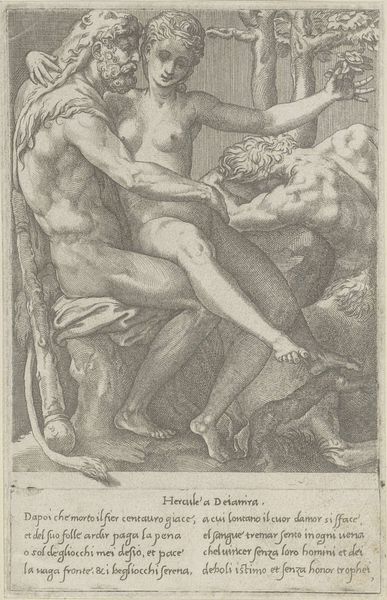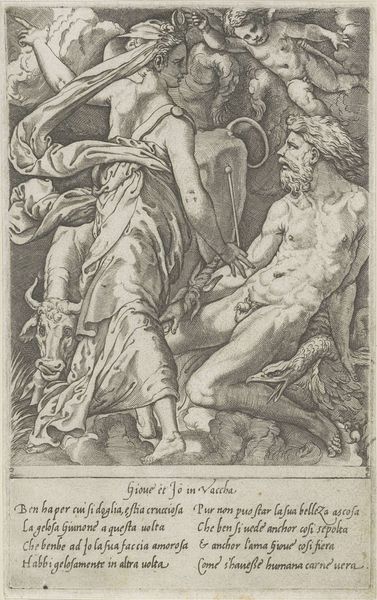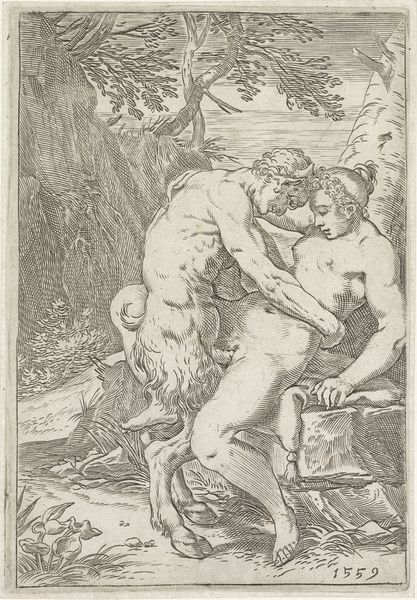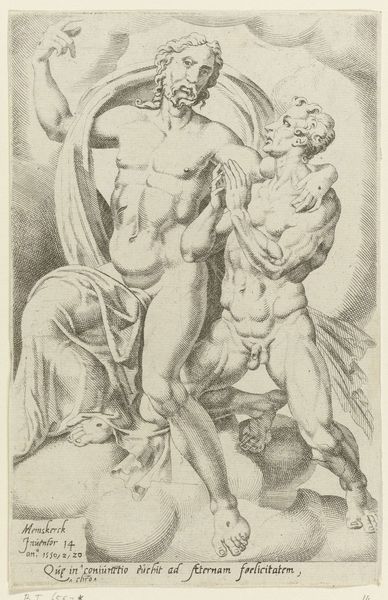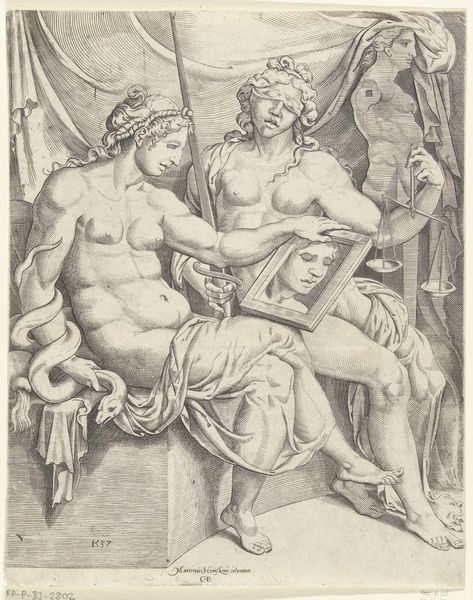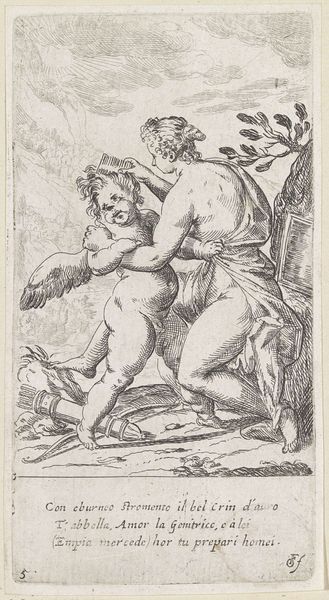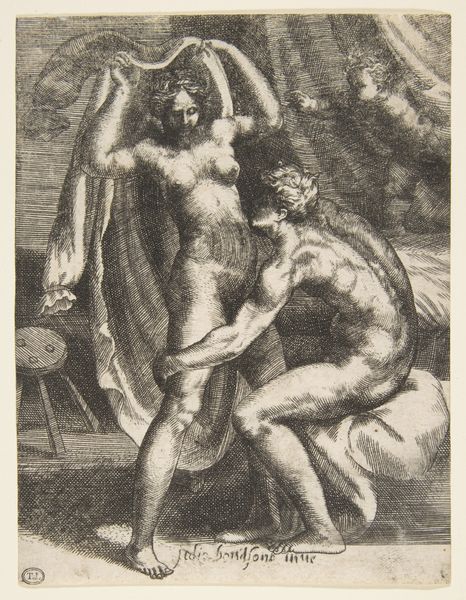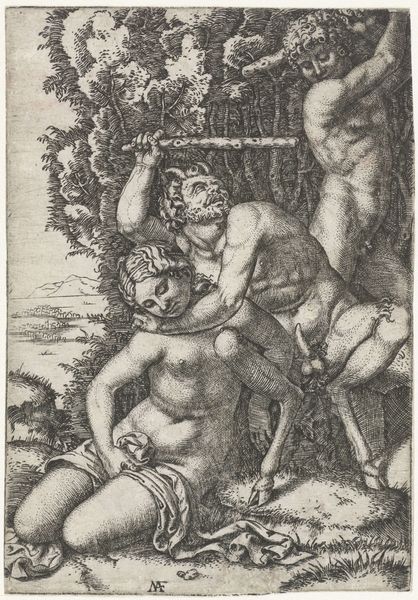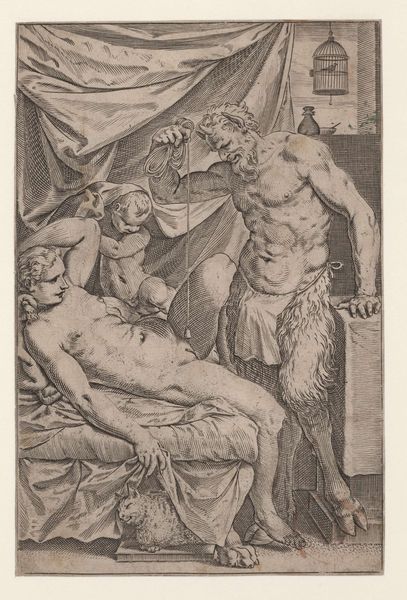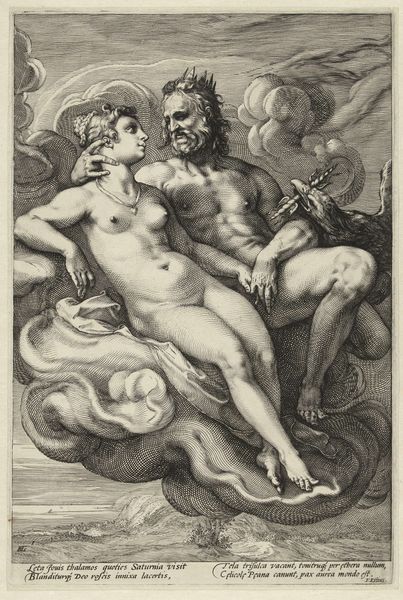
Dimensions: height 90 mm, width 67 mm
Copyright: Rijks Museum: Open Domain
Curator: This engraving, titled "Pan en Hermaphroditus," was created by Annibale Carracci between 1570 and 1609. It currently resides in the Rijksmuseum. What are your immediate impressions? Editor: The contrast! It's immediately striking how Carracci has played with light and shadow. The intense crosshatching gives depth and a peculiar softness, contrasting the solid forms with the airy cloud base. It also has an unusual symmetry that invites one to investigate the scene. Curator: Precisely. The subject matter—Pan, the god of the wild, alongside Hermaphroditus, who embodies both masculine and feminine— speaks volumes about the artist’s and perhaps the broader culture's fascination with the interplay between opposing forces. In this Baroque work, Pan's association with nature and unbridled desire encounters the delicate beauty of Hermaphroditus. Editor: Indeed, observing Hermaphroditus, a single form that blends both genders as she plays on that baroque harp suggests an internal harmony or, even further, a transfiguration of the traditionally recognized sexes in service to Art. Note how Carracci also emphasizes the flowing lines and serpentine poses characteristic of Mannerism, even as he anticipates the dramatic dynamism of the Baroque. The overall effect feels emotionally heightened and purposefully staged. Curator: This echoes a broader artistic interest in mythology during this period and suggests perhaps that myth offered artists a certain narrative and symbolic flexibility for psychological insights and explorations of desire, gender, and the boundaries of the natural and supernatural world. Notice how Pan stares towards Hermaphroditus’ groin with interest…Carracci's art allows a discussion of the desires of this Pagan God to flow outward from this small engraving. Editor: The level of detail given the medium is incredible! Just look at the individual strands of hair and the intricate texture of Pan’s satyr beard. One cannot help but recognize the high value on artistry through masterful handling of line. Considering the symbolic import, its power lays in material translation! Curator: An incisive and fascinating analysis. Thank you. For me, this work, now viewed within the context of a museum setting, reveals the past is never truly past; its myths and narratives constantly reshaped to meet our own understanding of humanity. Editor: Agreed! In art, it seems, nothing exists in isolation, yet material specificity makes each work, however representational, distinct in historical time.
Comments
No comments
Be the first to comment and join the conversation on the ultimate creative platform.
